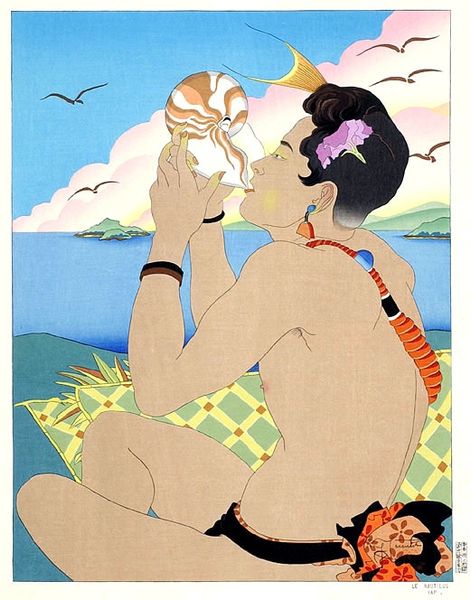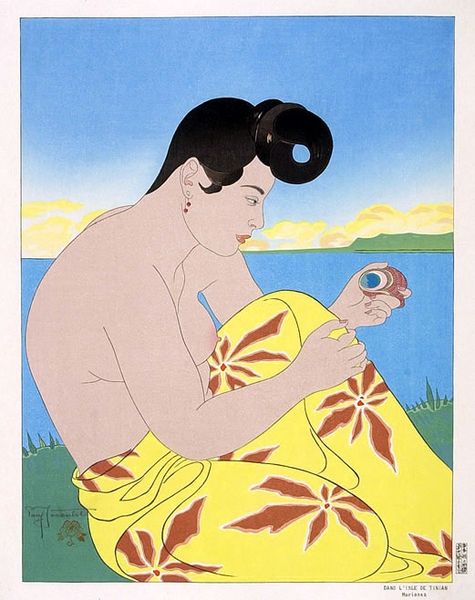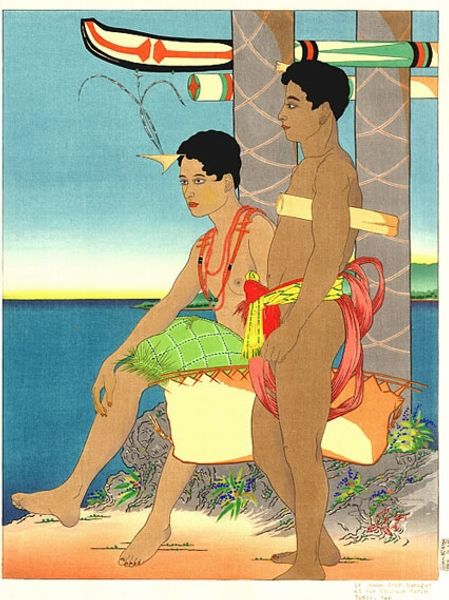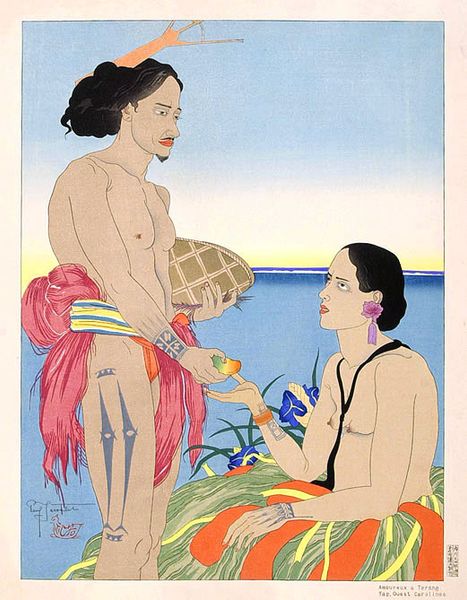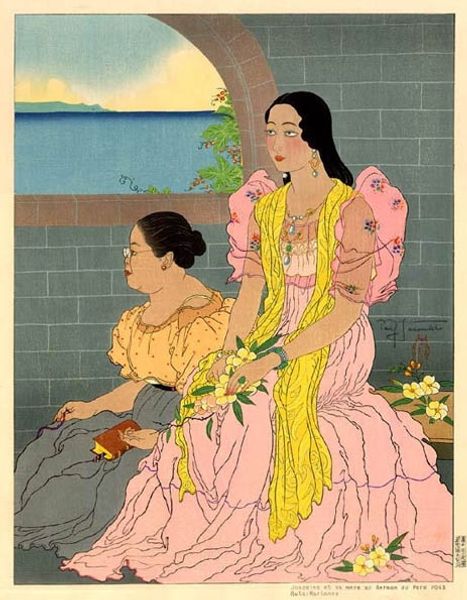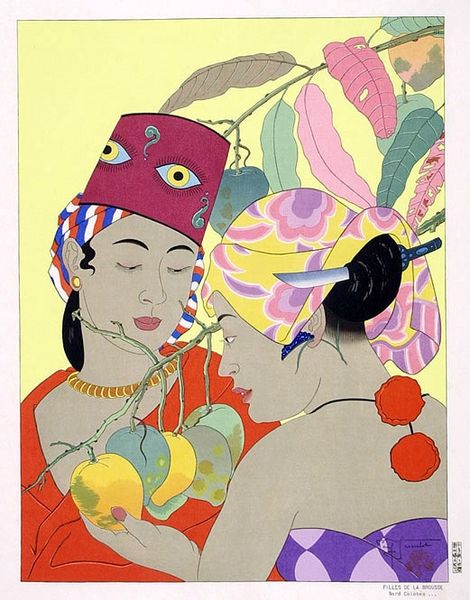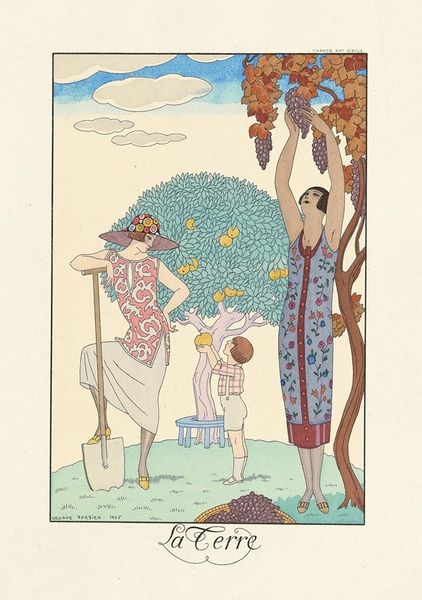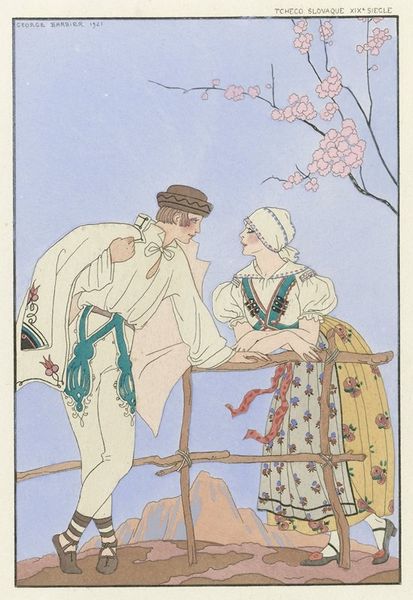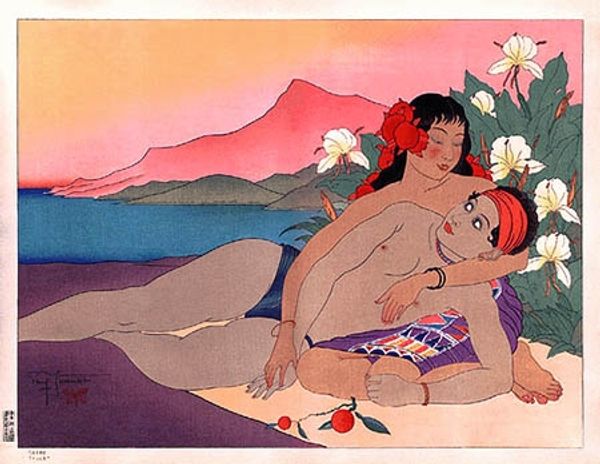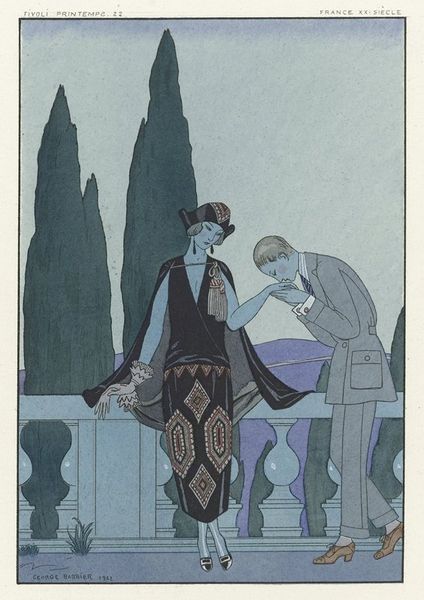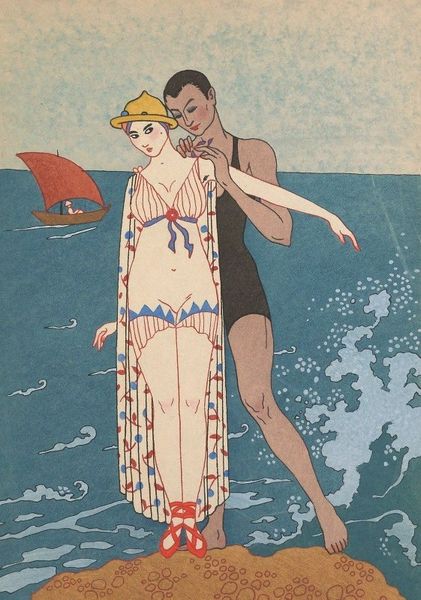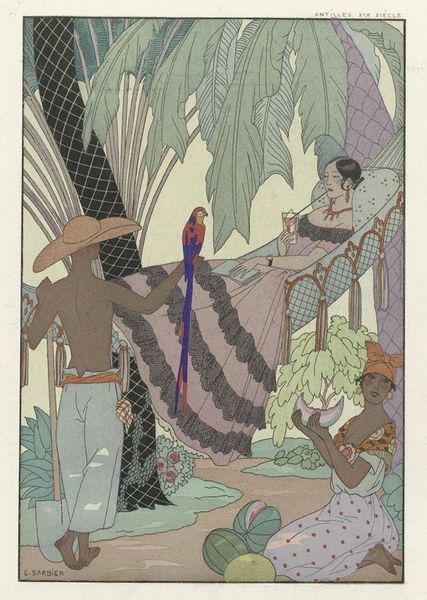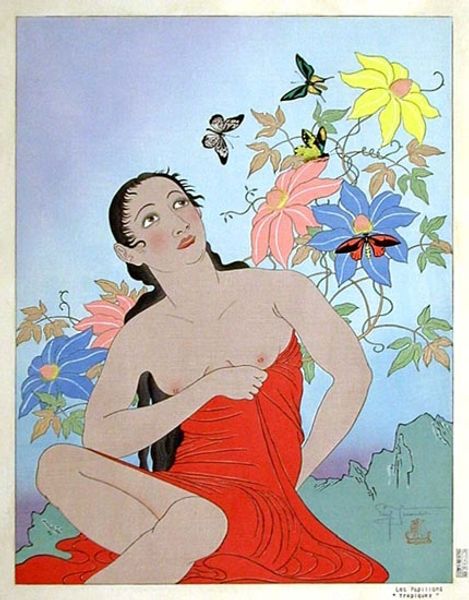
Copyright: Public domain Japan
Curator: Looking at Jacoulet's "Coucher De Soleil A Menado. Celebes," a woodblock print from 1938, what immediately strikes you about the materials used and their impact? Editor: It's a print, which gives it this flat, graphic quality, almost like a poster. But the detail is surprising. What does the woodblock medium tell us about its creation and distribution? Curator: The woodblock process is key. It's a form of artistic production deeply embedded in specific labor practices. It highlights a repetitive, almost industrial approach to artmaking even within what we might consider 'high art.' Think about the layers of labor involved—the artist, the carver, the printer. Each contributes to the final product, distancing it from the romantic ideal of the solitary genius. How does this mass production influence our interpretation of this 'exotic' scene? Editor: It’s interesting you use the word 'exotic,' because there’s something about the poses and expressions of the figures that feels a little staged or...off. Does the print medium also connect to how it was intended to be circulated or consumed at the time? Curator: Absolutely. Woodblock prints like these were often intended for trade, for consumption by a particular audience fascinated by the "Orient." Considering the orientalist themes in the work, the mass-producible nature of woodblock printing raises questions about commodification and consumption of culture. How might this impact our understanding of cultural representation? Editor: So, thinking about the labor involved, the audience intended, it really challenges our assumptions about the artwork as something solely aesthetic, divorced from these material and economic conditions. I had not considered these aspects when first looking at this piece. Curator: Exactly. Understanding the process, materials, and social context of artmaking opens up critical perspectives on what we're actually looking at. It complicates, enriches, and ultimately makes the artwork much more interesting.
Comments
No comments
Be the first to comment and join the conversation on the ultimate creative platform.
